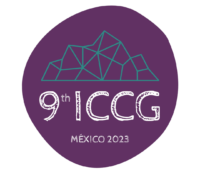Keywords: in-between inhabitation; permanent temporariness; urban migration / For a long time, the urban studies debate on migration processes has developed through binary definitions such as formal/informal, local/outsider, ‘host’ communities/‘incoming’ migrants, inclusion/exclusion, norm/exception, emergency/ordinariness. The polarized understanding of permanence and temporariness emerges as one of these binaries: permanence often being regarded as the condition to aspire to and temporariness as a provisional or exceptional situation. In the last decades, the widespread presence of populations ‘on the move’, in transit, and displaced has prompted researchers to overcome the conceptualization of migration as a process leading to long-term settlement and integration. Hence, urban studies have devoted increasing attention to the more nuanced spatialities and temporalities that characterize migration, settlement, and inhabitation processes, as the introduction of concepts such as “provisional permanence” and “protracted temporariness” testifies. Amidst intensifying global flows of people, capital and goods, and the contextual evolution of borders into an apparatus for filtering and control, cross-border circulations of people intersect with broader urban dynamics of displacement, bordering, and exclusion. A wider range of populations experience in-between conditions of inhabiting the city, whereby provisional socio-spatial arrangements and unsettled inhabitation emerge as both an effect of, and a strategic response to, such dynamics (Fawaz, 2016). Concepts emerging from different geographies, from ‘grayspacing’ (Yiftachel, 2009) to ‘dwelling in liminalities’ (Lancione and Simone, 2021) contribute to outline cities as contested borderscapes of ‘differential inclusion’ (Mezzadra and Neilson, 2012) hosting a ‘deeply stratified urban citizenry’ (Gawlewicz & Yiftachel, 2022). Precarity is increasingly normalized, transiency often slips into an open-ended standstill, and social inclusion gets both tenuous and conditional. The discussion on these in-between conditions, although very rich and rapidly expanding, is still fragmented and often largely defined through a traditional understanding of permanence prevailing over temporariness. As Latham (2014) underlines, we still need to ‘liberate temporariness’ from its understanding as a deferred permanence. In this sense, we refer to in-between inhabitation to capture the heterogeneous and contested process of dwelling and city-making that unfolds through the practices of unsettled populations – including various profiles of ‘migrants’ and ‘local’ residents – who navigate the time and space between permanence and temporariness. While generally unfolding in everyday life, mostly under the radar of official policy-making and beyond the realm of institutionalized planning, in-between inhabitation contributes substantially to the continuous remake of the city, its relations, affordances, and spaces. This contribution argues that there is a need to explicitly set the focus on in-between inhabitation. We aim at systematizing existing standpoints and discussing future perspectives through a review of interdisciplinary literature across migration and urban studies. We ground our argument in three snapshots from recent fieldwork for our research and work practice: sites that we may define as “urban borderlands”, as diverse as an occupied building in Johannesburg’s fast-changing inner-city, a help-desk in a run-down historical neighbourhood in Palermo turned into a Mediterranean migration crossorads, and an informal waste collection centre in a former gecekondu area that is undergoing a botched urban transformation project in Istanbul. Across these three very different contexts, we can observe how residents with varying origin, background, and legal status dwell through forms of transitoriness, marginalization, and instability. This in-between inhabitation carries significant implications and challenges for urban planning and politics: with our contribution, we aim to discuss the theme through the three interrelated dimensions of planning theory, spatial arrangements, and citizenship practices. / REFERENCES: Fawaz, M. (2016) “Planning and the refugee crisis: Informality as a framework of analysis and reflection,” Planning Theory, 16(1): 99–115. Gawlewicz, A. and Yiftachel, O. (2022) “‘Throwntogetherness’ in hostile environments. Migration and the remaking of urban citizenship”, City, (26)2-3: 346-358. Huq, E. and Miraftab, F. (2020) ““We are All Refugees”: Camps and Informal Settlements as Converging Spaces of Global Displacements”, Planning Theory & Practice, (21)3: 351-370. Lancione, M. and Simone, A. (2021) “Dwelling in liminalities, thinking beyond inhabitation”, Environment and Planning D Society and Space.
Latham, R. (2014) “Temporal orders, re-collective justice, and the making of untimely states,” in Vosko, L.F., Preston, V., and Latham, R. (eds.) Liberating Temporariness?: Migration, work, and citizenship in an age of insecurity, 272–295. Kingston, Ontario: McGill-Queen’s Univeristy Press. Mezzadra, S., and Neilson, B. (2012) Border as Method, or, the Multiplication of Labor. Duke University Press. Yiftachel, O. (2009) “Theoretical Notes On `Gray Cities’: the Coming of Urban Apartheid?”, Planning Theory, 8(1): 87–99.
